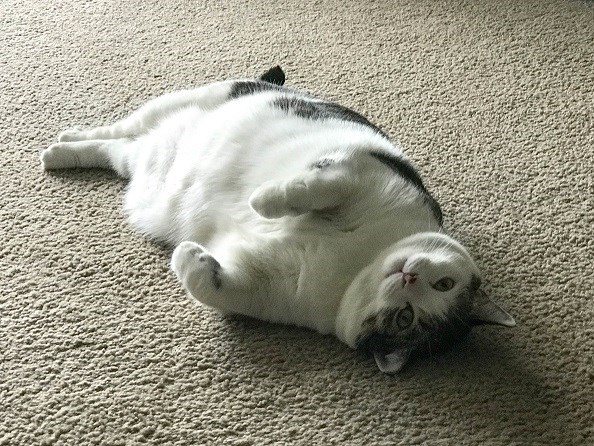Contact
Bodil Ström Holst
Senior Lecturer at the Department of Clinical Sciences; Division of Reproduction
Telephone: 018-671608
E-mail: bodil.strom-holst@slu.se

Overweight in cats is a major risk factor for diabetes mellitus and has also been associated with other disorders. Overweight and obesity are believed to be increasing problems in cats, as is currently seen in people, with important health consequences.
The objectives of the present study were to determine the prevalence of overweight in cats from two different cohorts in a cross-sectional study design and to assess associations between overweight and diagnoses, and between overweight and demographic and environmental factors. Data were obtained from medical records for cats (n = 1072) visiting an academic medical center during 2013–2015, and from a questionnaire on insured cats (n = 1665). From the medical records, information on body condition score, breed, age, sex, neutering status, and diagnosis was obtained. The questionnaire included questions relating to the cat's body condition, breed, age, sex, neutering status, outdoor access, activity level, and diet. Data were analyzed by multivariable logistic regression.
The prevalence of overweight was 45% in the medical records cohort and 22% in the questionnaire cohort, where owners judged their pet's body condition. Overweight cats in the medical records cohort were more likely to be diagnosed with lower urinary tract disease, diabetes mellitus, respiratory disease, skin disorders, locomotor disease, and trauma. Eating predominantly dry food, being a greedy eater, and inactivity were factors associated with an increased risk of overweight in the final model in the questionnaire cohort. In both cohorts, the Birman and Persian breeds, and geriatric cats, were less likely to be overweight, and male cats were more likely to be overweight.
The prevalence of overweight cats (45%) as assessed by trained personnel was high and in the same range as previously reported. Birman and Persian cats had a lower risk of overweight. The association with dry food found in adult, neutered cats is potentially important because this type of food is commonly fed to cats worldwide, and warrants further attention. Drawbacks related to the study design need to be acknowledged when interpreting the results, such as a potential for selection bias for cats visiting an animal hospital, and an information bias for questionnaire data. The high occurrence of overweight in cats needs to be addressed because it negatively affects their health.
https://doi.org/10.1186/s13028-018-0359-7
Öhlund, M., Palmgren, M., & Holst, B. S. (2018). Overweight in adult cats: a cross-sectional study. Acta Veterinaria Scandinavica, 60(1), 5.
Bodil Ström Holst
Senior Lecturer at the Department of Clinical Sciences; Division of Reproduction
Telephone: 018-671608
E-mail: bodil.strom-holst@slu.se